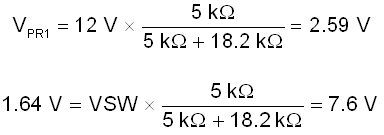JAJSG28F august 2018 – august 2020 TPS2120 , TPS2121
PRODUCTION DATA
- 1
- 1 特長
- 2 アプリケーション
- 3 概要
- 4 Revision History
- 5 Device Comparison Table
- 6 Pin Configuration and Functions
- 7 Specifications
- 8 Parameter Measurement Information
-
9 Detailed Description
- 9.1 Overview
- 9.2 Functional Block Diagram
- 9.3
Feature Description
- 9.3.1 Input Settling Time and Output Soft Start Control (SS)
- 9.3.2 Active Current Limiting (ILM)
- 9.3.3 Short-Circuit Protection
- 9.3.4 Thermal Protection (TSD)
- 9.3.5 Overvoltage Protection (OVx)
- 9.3.6 Fast Reverse Current Blocking (RCB)
- 9.3.7 Output Voltage Dip and Fast Switchover Control (TPS2121 only)
- 9.3.8 Input Voltage Comparator (VCOMP)
- 9.4 TPS2120 Device Functional Modes
- 9.5 TPS2121 Device Functional Modes
- 10Application and Implementation
- 11Power Supply Recommendations
- 12Layout
- 13Device and Documentation Support
- 14Mechanical, Packaging, and Orderable Information
パッケージ・オプション
デバイスごとのパッケージ図は、PDF版データシートをご参照ください。
メカニカル・データ(パッケージ|ピン)
- YFP|20
サーマルパッド・メカニカル・データ
発注情報
10.3.4.1 Selecting PR1 and CP2 Resistors
In this example, the device will switch from IN1 to IN2 when the voltage on IN1 drops below 7.6 V. Therefore, the voltage on PR1 needs to remain higher than the voltage on CP2 until this condition exists.
Since this example was tested on the TPS2121EVM, the resistor divider configured the voltage on CP2 to be 1.644 V.
See Equation 12 for the VCP2 Calculation

Since the voltage on CP2 is higher than VREF, fast switchover mode is enabled.
Next, to calculate the necessary resistor divider on PR1, the voltage on PR1 needs to drop below 1.64 V when IN1 reaches 7.6 V. On the EVM, the PR1 resistors were configured as followed:
See Equation 13 for the VPR1 Caculation
